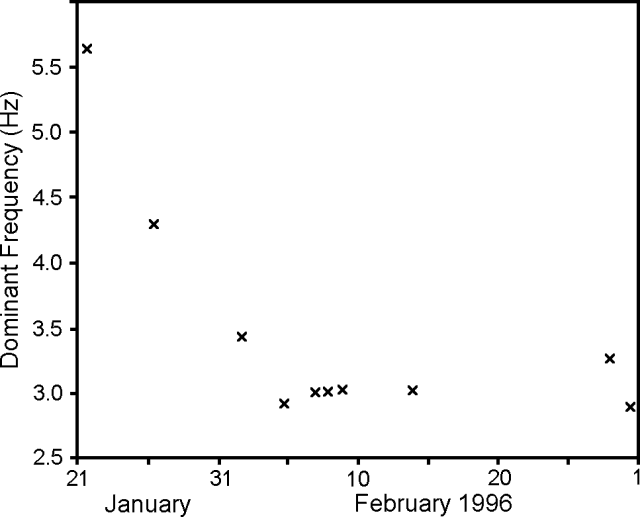Report on Galeras (Colombia) — February 1996
Bulletin of the Global Volcanism Network, vol. 21, no. 2 (February 1996)
Managing Editor: Richard Wunderman.
Galeras (Colombia) Slight increase in seismicity, but still at low levels
Please cite this report as:
Global Volcanism Program, 1996. Report on Galeras (Colombia) (Wunderman, R., ed.). Bulletin of the Global Volcanism Network, 21:2. Smithsonian Institution. https://doi.org/10.5479/si.GVP.BGVN199602-351080
Galeras
Colombia
1.22°N, 77.37°W; summit elev. 4276 m
All times are local (unless otherwise noted)
Seismicity during January and February remained low, similar to previous months. The activity was characterized by fracture events at the seismogenic source 2-8 km NE of the main crater. One M 2.9 volcano-tectonic event from this source on 26 January was felt by residents in Pasto and near the epicenter. Earthquakes were also felt on 4 and 19 February (M 2.4 and 2.7, respectively). Long-period events associated with gas movement increased slightly at the end of January and early February, but remained at low levels. This activity was mainly characterized by tornillo signals (screw-type events) lasting 30 seconds. The dominant frequency of these events also declined in late January (figure 79). A similar pattern was observed before eruptions in 1992-93.
 |
Figure 79. Dominant frequency of tornillo signals at Galeras, 21 January-1 March 1996. Courtesy of OVP. |
The two electronic tiltmeters showed no significant changes. SO2 measurements using COSPEC registered emission rates of
Geological Summary. Galeras, a stratovolcano with a large breached caldera located immediately west of the city of Pasto, is one of Colombia's most frequently active volcanoes. The dominantly andesitic complex has been active for more than 1 million years, and two major caldera collapse eruptions took place during the late Pleistocene. Long-term extensive hydrothermal alteration has contributed to large-scale edifice collapse on at least three occasions, producing debris avalanches that swept to the west and left a large open caldera inside which the modern cone has been constructed. Major explosive eruptions since the mid-Holocene have produced widespread tephra deposits and pyroclastic flows that swept all but the southern flanks. A central cone slightly lower than the caldera rim has been the site of numerous small-to-moderate eruptions since the time of the Spanish conquistadors.
Information Contacts: Pablo Chamorro, INGEOMINAS Observatorio Vulcanologico y Sismologico de Pasto (OVP), A.A. 1795, San Juan de Pasto, Nariño, Colombia (URL: https://www2.sgc.gov.co/volcanes/index.html).

